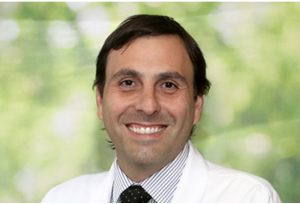Alerts have been raised by different scientific societies due to the high global prevalence, affecting up to 30% of the general population and up to 75% of people with obesity and/or diabetes.
Andrea Riquelme, Journalist.- At present, it has displaced other causes of liver transplantation, being the main indication for transplantation currently in Chile.
Specialists recommend being alert regarding this condition, since a percentage of people with fatty liver may have more aggressive evolutions.
The increase in the prevalence of fatty liver has occurred in parallel with the increase in obesity and diabetes. In this regard, Dr. Gabriel Mezzano Puentes, president of the Chilean Association of Hepatology (ACHHEP), refers to the data delivered in the National Health Survey carried out in 2016 and 2017, which are really worrying and revealed that 74% of Chileans were overweight and 12% of older adults had diabetes mellitus. For the specialist, the main problem with this disease is that its treatment requires a significant, but at the same time sustained, change in lifestyle, which means greater awareness and commitment on the part of the patients.
According to studies worldwide and also carried out in Chile, It is estimated that 25-30% of the population would have fatty liver, a figure that even rises to 75%, among people with obesity and/or diabetes. These data are very similar to those reported by countries such as the United States, in which this disease has displaced other causes, and is currently the main determinant of liver transplantation.
On the other hand, we know that this disease is associated with genetic components that are more frequent in the Latin American population, affecting both children and adults and up to 10% of people without other diseases and of normal weight.
Multiple international studies have shown that the presence of this disease is associated with significant costs and resources of the health system, unlike other liver diseases. However, the vast majority of the necessary care can be carried out in primary health care with a multidisciplinary team, reinforcing nutrition measures and physical exercise.
In this sense, Dr. Francisco Barrera, hepatologist and vice president of ACHHEP, explains that “the big problem is that around 20-30% of people who have fatty liver will develop a form of liver disease over the years. more advanced called non-alcoholic steatohepatitis and which has the risk of progressing to cirrhosis, liver cancer and even causing death. If one extrapolates these data to the Chilean population, we are talking about a huge number of patients who will require controls.
For his part, Dr. Juan Pablo Arab, director of the ACHHEP, comments that fatty liver in general does not give obvious symptoms in the early stages of the disease and the diagnosis is usually made by an incidental finding in an abdominal ultrasound or in blood tests. “Currently there are no effective drugs approved specifically for this disease, however, there are multiple under development with encouraging preliminary results. However, it is possible to stop its progression to severe liver damage, through a change in lifestyle focused on physical activity and a correct diet low in carbohydrates (sugars) ”, points out Arab.
Specialists suggest that everyone in their medical check-ups should consult for the presence of fatty liver, especially if they are overweight, obese, diabetic, high blood pressure, insulin resistance, cholesterol or high triglycerides.















